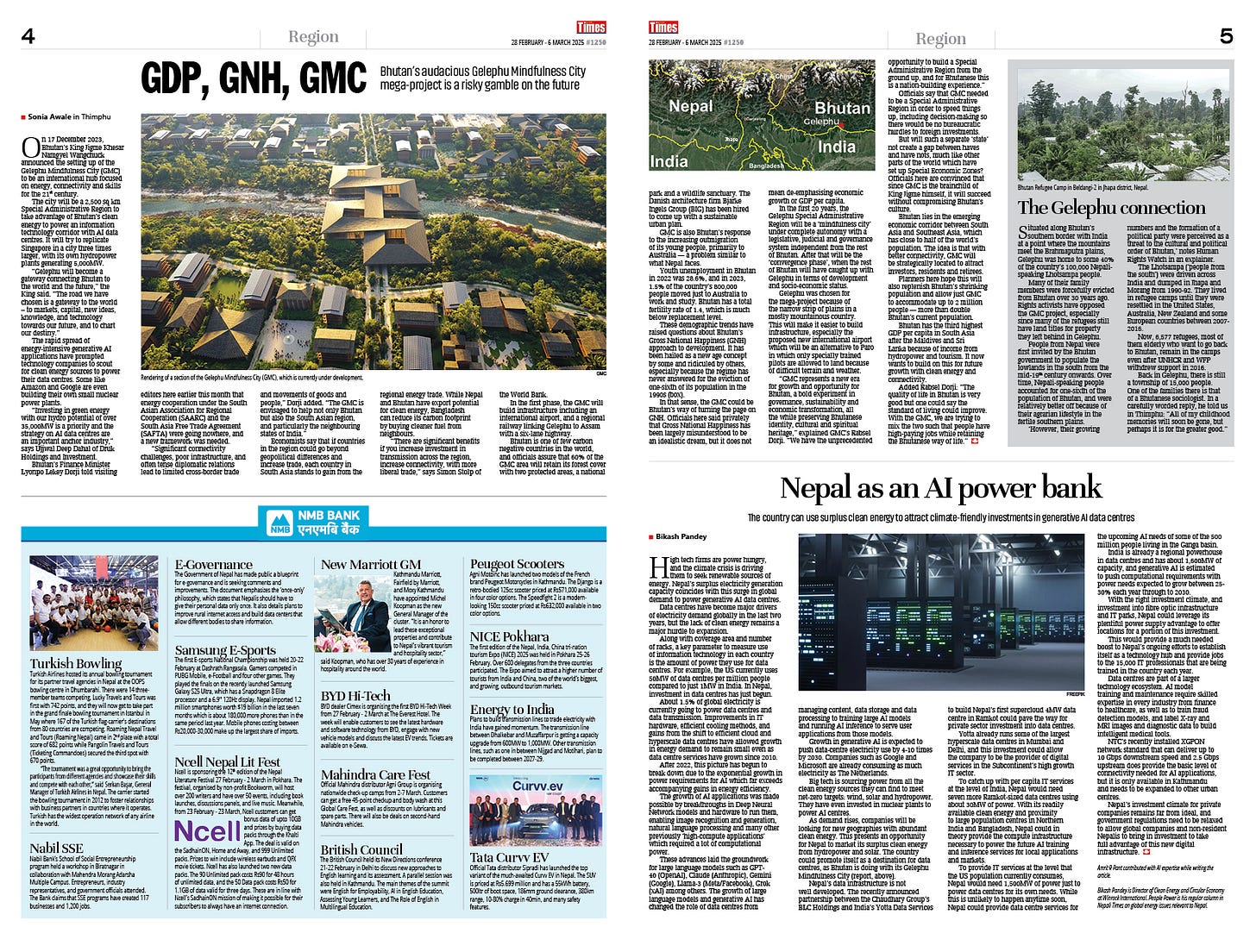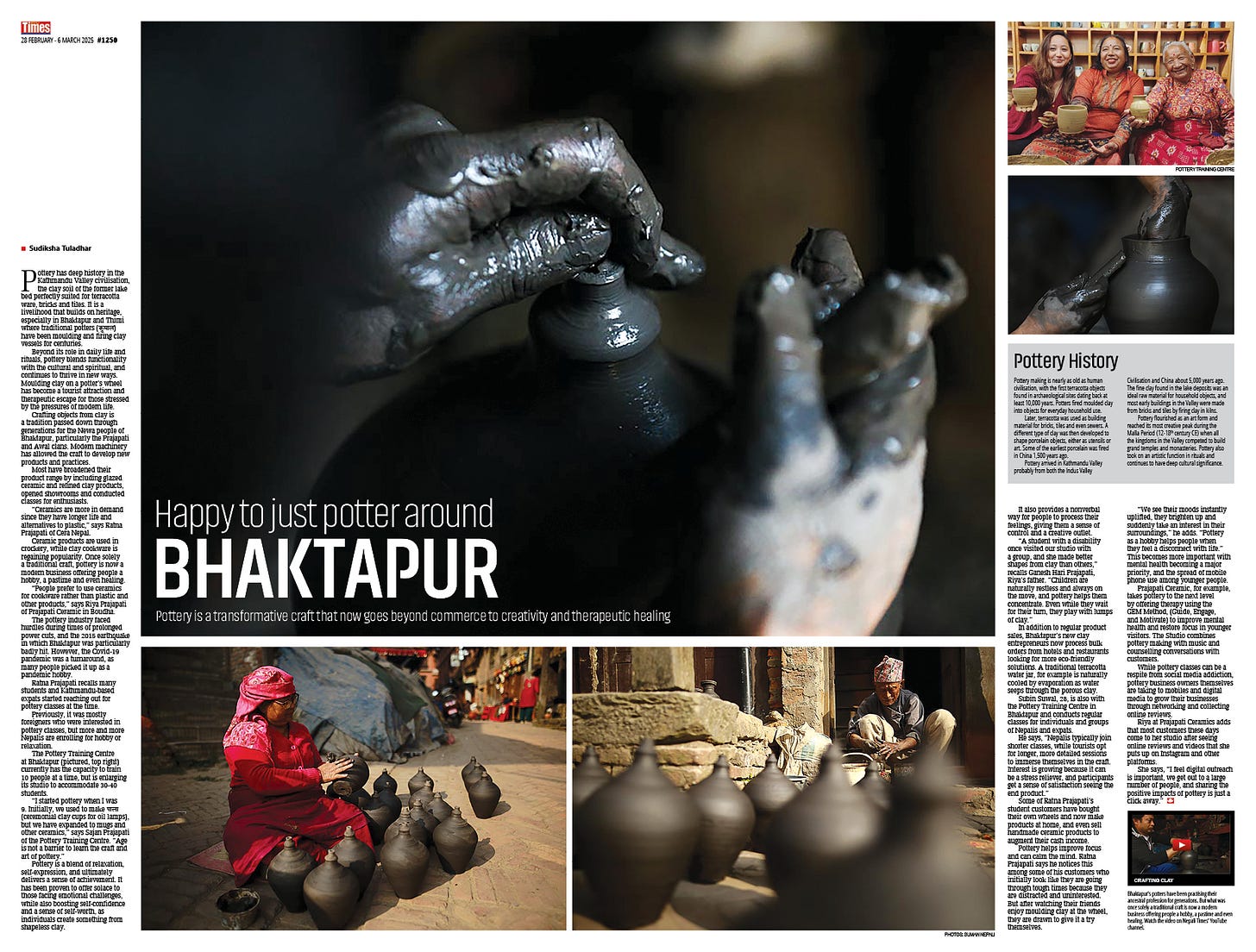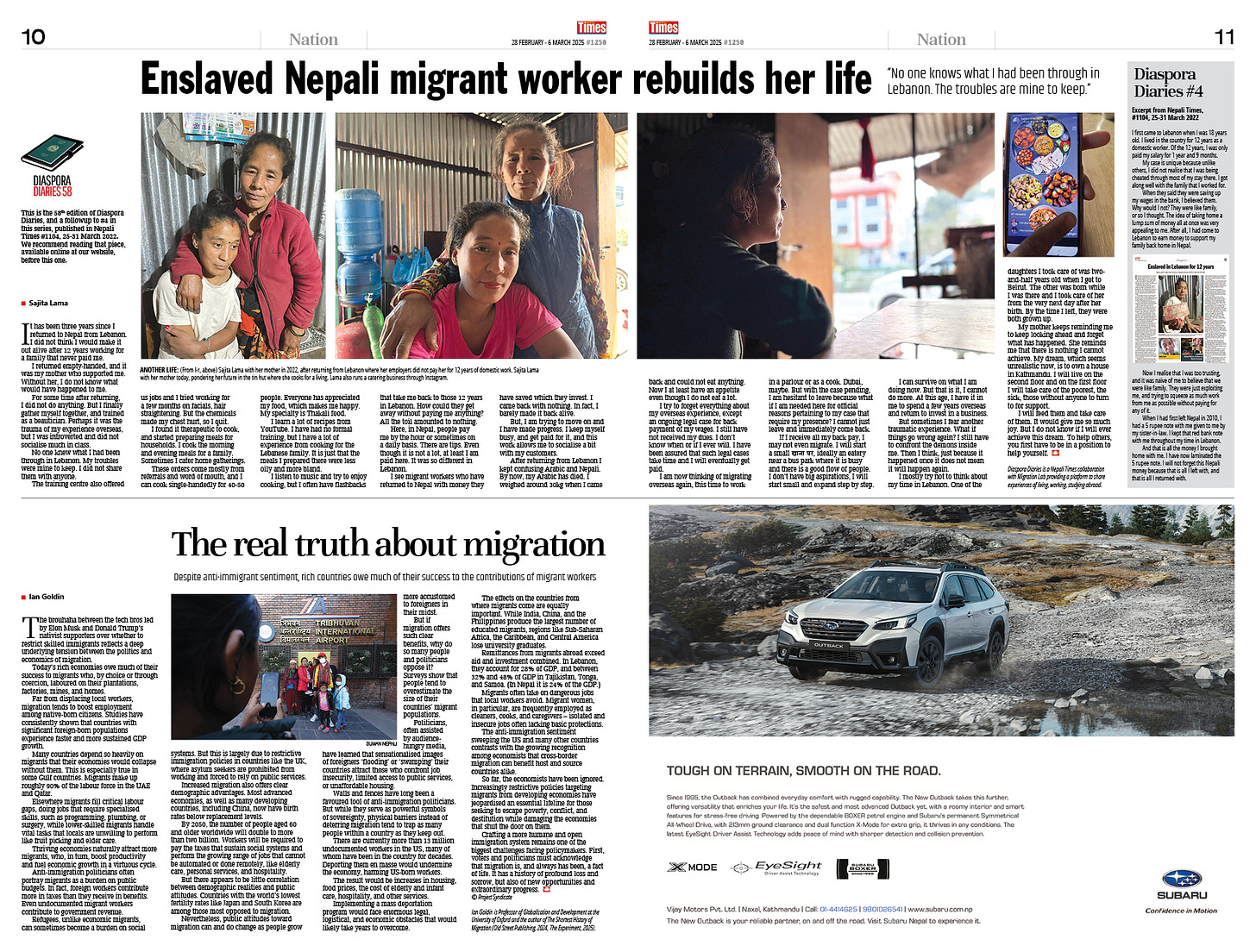Rising Nepal
Nepali Times ईspecial 28 February - 6 March 2025 #1250
Nepal has just unilaterally increased the number of peaks in the country above 8,000m from 10 to 14. My question is why stop at 14?
How come the South Summit of Mt Everest has not been declared a new eightthousander? That way, the government can charge double the royalty fee from expeditions en route to the world’s highest mountain by billing for two peaks.
There are many mountain tops we have not counted yet, for example there are at least eight more subpeaks on the long summit ridge of Annapurna I alone. Kangchenjunga has three peaks besides the two that have been added. Manaslu has a side pinnacle that we have failed to cash in on.
And why stop there? The Department of Mountaineering can make it mandatory for expeditions from this Spring season onwards to leave their garbage on the South Col instead of requiring them to bring it all down. Climbing gear like spent oxygen cylinders, tents, gas canisters, toilet tents and their contents can be piled up to give us another major eightthousander between Everest and Lhotse.
My guess is Nepal can increase the count of the highest peaks in the world in its possession to at least 28 and thus boost revenue. And since we have run out of hilltops to build cable cars on, private entrepreneurs should be allowed to connect viewtowers on summits of Himalayan peaks with cable cars.
They can start by licensing a cable car and casino on Mt Everest itself with a zipline descent. Since we share the summit with China, it could all be financed by the BRI since the Americans have pulled the plug on the MCC.
Speaking of cable cars, the Nepali Times Editorial this week by Shristi Karki unpacks the controversy over the project to take a passenger ropeway to Pathibhara/Mukkumlung in Taplejung. It has pitted some members of the Limbu community that regard the whole mountain as sacred, against the government and private investors who want a cable car to the temple on top (Progress and/or Preservation, page 2). Nepal needs to redefine what development means, and who it is for. We do not have to dam every river and have a viewtower on every mountain.
Bhutan is trying to get this balance right, and is opening up to the outside world with its grandiose new Gelephu Mindfulness City project. The kingdom may also be looking beyond its Gross National Happiness ideology to connect to the globalised world of IT. Sonia Awale travels to Bhutan to see how its leaders are looking beyond its hydropower-driven growth model (Small Bhutan Dreams Big, page 1 and 4-5).
There is a lot Bhutan and Nepal can cooperate on, and energy expert Bikash Pandey in his regular column, People Power, adds that Nepal also has the potential to turn its surplus clean electricity to attract investments in climate-friendly generative AI data centres (Nepal As an AI Power Bank, page 4).
The centrefold this week is on the enduring tradition of pottery in Bhaktapur and Thimi. Sudiksha Tuladhar speaks to the Prajapati clan which is adding a new art and therapy dimension to its ancestral profession (Pottering About in Bhaktapur, page 6-7).
The latest 58th episode of Diaspora Diaries is the inspiring story of Sajita Lama, who trustingly raised the children of a Lebanese family, but was not paid for 12 years. Nepali Times carried her heart-wrenching story in Diaspora Diaries #4 in 2022, and has followed up with Sajita three years later to find that with help from her mother, she is making a living as a cook (Enslaved Nepali Migrant Worker Rebuilds Her Life, page 10-11).
By the way, Miss Moti is back. If you missed it, here it is.
Till next week,
Kunda Dixit






Interesting that Bhutan could expel the Lhotshampa and then develop a modern, special zone; and Gaza may be emptied out to assuage Trump's desire for some beachfront riviera.